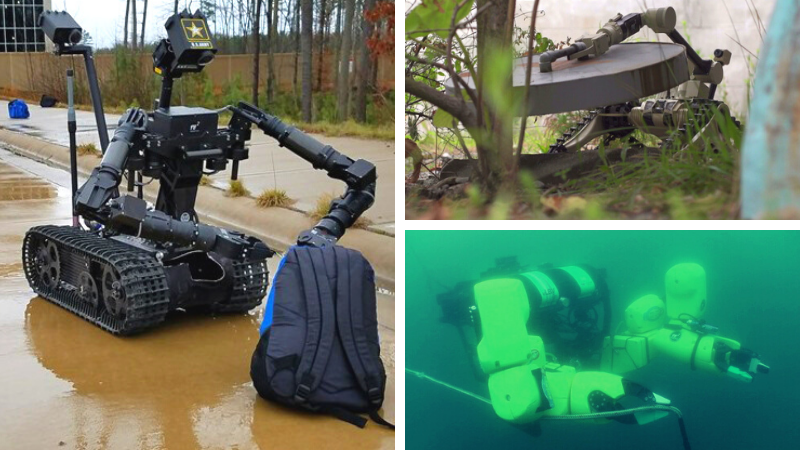Mobile Robots Advance Beyond the Factory Floor
Today's robotic arms are sleeker, smaller, and can operate in unstructured environments

RE2 Robotics' mobile robot arms operate in varying environments, including underwater.
This article was first published on
www.resquared.comSince they were first introduced to us half a century ago, robots have continued to revolutionize the way companies do business. As early as the 1960s, industrial robotic arms—large, bulky machines that were typically bolted to factory floors—began to transform manufacturing by automating repetitive tasks at three times the speed of humans. Manufacturers that were not ready or able to implement this “futuristic” technology quickly found themselves falling behind the competition.
While modern industrial arms are much more efficient and reliable than their predecessors, they are still primarily stationary fixtures. Highly specialized, they remain in one place, repeating the same task, and can only operate in clean, well-lit, indoor environments.
Human-like mobile robots, on the other hand, are able to move outside of the factory and into a world designed for and by humans. They are sleeker, smaller and able to operate in unstructured environments with varying lighting and weather conditions. These robots are just as capable as their industrial counterparts, but are optimized for weight, power density, and power consumption. They not only protect workers from dangerous, repetitive tasks, but also can assist with applications that once were unable to benefit from robotic technology, such as the energy, aviation and medical industries.
Today, advances in human-like robotic technology, including advanced machine learning and autonomy algorithms, are giving robots the power to think, react and adapt to changing environments. Moreover, significant advancements in computational power, coupled with falling costs, have made the integration of computer vision algorithms for less-structured or unstructured applications possible. Many leading-edge robotics companies now offer computer vision and autonomy expertise that allows a robot to perceive much as a human would, without the need for significant structural modifications.
In this accompanying video, Business Development Manager Travis Schneider shares his thoughts on the differences between traditional and human-like robots.
To learn more about RE2’s human-like robotic technology, please visit our website.